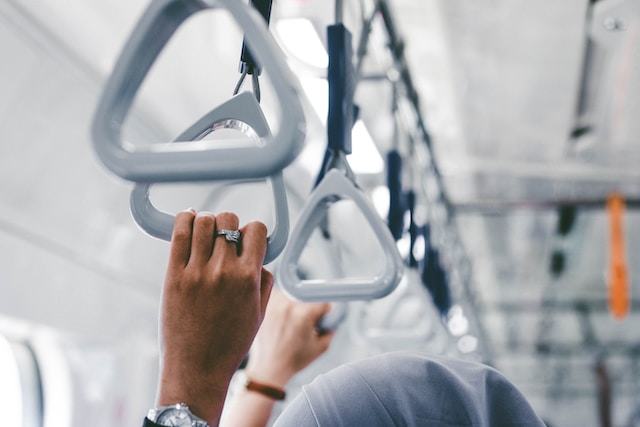Alright folks, buckle up because we’re about to embark on a thrilling ride through the bustling, lively universe of public transportation! This is where life really happens. Picture this: a kaleidoscope of cultures, faces, stories, and places all zooming by, as the city around you hustles and bustles. It’s like an electric dance, and you’re right in the thick of it!
Types of Public Transportation in the U.S.
Hop on board, friends! The United States is a vast land with an eclectic mix of public transportation options. From the bustling subways of New York City to the historic cable cars of San Francisco, there’s no shortage of ways to get around. But what types are there? Buses, subways, light rails, trams, and ferries are just a few options you have.
Why People Choose Public Transportation
Why do folks prefer public transport? For many, it’s an affordable and convenient alternative to driving. No need to worry about gas, maintenance, or parking. Plus, it’s greener – like turning your commute into an environmental high-five!
Crunching the Numbers: Costs of Public Transport in Different States
Alright folks, buckle up! Let’s take a road trip across the good ol’ US of A and see what it costs to take public transport in different states. Imagine you’ve got an unlimited pass and can hop on and off wherever you like. Now, wouldn’t that be dreamy? But let’s get back to reality and break down the costs.
Buses: The Backbone of U.S. Public Transportation
Buses are like the trusty old friends of public transport. In cities big and small, they’re often the go-to option. On average, a single bus ride costs around $2, but this varies depending on the city and state. In Los Angeles, you’re looking at $1.75, while in New York City, it’s $2.75.
Subway Systems: Racing Through the Underground
Ah, the subway – where you’re just a blur racing through the city’s veins. The average price of a subway ride in the U.S. is about $2.50. However, the prices can be as dynamic as a rollercoaster. In New York City, for example, a MetroCard will cost you $2.75 a ride.
Special Mention: Live Casinos Online
Hold on, let’s take a quick detour. Speaking of dynamic experiences, have you tried out live casinos online? Just like hopping on a subway can zip you across the city, live casinos online can teleport you into a world of excitement and potential jackpots. It’s like hitting the Vegas strip without leaving your couch!
Light Rails and Trams: The Middle Ground
Sleek, smooth, and oh-so-scenic! Light rails and trams are like the cool cousins of buses and subways. Prices usually hover around $2 to $3, but can vary depending on the network and city.
Ferries: Cruising Across the Waters
Fancy a breath of fresh sea air? Ferries are your ticket to tranquility. Prices for a ferry ride range widely – from a couple of bucks to over $10, depending on the route and location.
Factors Influencing Public Transportation Prices
Buckle up, because we’re about to break down the nitty-gritty factors that play a role in how much you shell out for a ride on the bus, train, or ferry. It’s like solving a puzzle with multiple pieces.
Geographical Location and Demographics
The prices of public transportation can swing like a pendulum based on where you are. Big city? Expect to pay a little more. Smaller town? Maybe a bit less.
Government Subsidies and Funding
Here’s a little secret: public transportation rarely makes a profit. That’s why government subsidies are crucial. More funding = lower prices for passengers.
Operational Costs and Maintenance
The daily hustle and bustle of running public transportation systems is no cheap affair. From repairing buses to paying staff, these costs have to be covered somehow, and they affect ticket prices.
Comparing Public Transportation to Other Modes of Travel
Imagine you’re standing on the streets of a bustling city, and you’ve got places to be. The question is: How are you getting there? Public transportation, your trusty car, or maybe one of those ride-sharing apps on your phone? Let’s break it down and see how they stack up against each other!
Public Transport vs. Driving a Personal Vehicle
The ultimate showdown! While public transportation can be cheaper and greener, having your car means freedom and flexibility. But remember, with great power comes great responsibility (and costs!).
Public Transport vs. Ride-Sharing Services
It’s the new kid on the block versus the seasoned veteran. Ride-sharing can be convenient, but it’s often pricier than public transportation, especially during peak hours.
The Future of Public Transportation in the U.S.
Let’s fast-forward to the future for a minute. Picture this: you’re stepping onto a shiny, silent electric bus or gliding above the streets in an autonomous monorail. Sounds like science fiction, right? Well, buckle up, because the future of public transportation in the U.S. is racing towards us faster than a New York City subway.
Technological Innovations
Tech is taking over, and public transportation is no exception. From electric buses to apps that streamline travel, the future is looking bright and efficient.
Sustainability and the Environment
As the world turns, so does our understanding of environmental responsibility. Expect to see more eco-friendly public transportation options sprouting up like trees after a rainstorm.
Conclusion: The Road Ahead for Public Transport
As we cruise to the end of our journey, it’s clear that public transportation in the United States is as diverse as the country itself. With a range of options and prices, it offers something for everyone. As technology and sustainability continue to shape the landscape, the road ahead for public transport looks like an exciting adventure.
